The perks and perils of working from home
You have two minutes to feed your dog before the host lets you in on that Zoom meeting. You have mastered the art of muting your microphone in sync with the pressure cooker whistle, and lunch often happens with at least 10 people peering at you from your laptop screen.
Some days you find yourself binging on Netflix dramas in the afternoon. Naps are non-negotiable. There’s no such thing as a late submission, only internet issues.
But as liberating as working from home might feel, it’s difficult to get work done when there are countless distractions and “better things to do” than draft a research proposal.
For Swasti Gautam, an intern working in the development sector, rolling out of bed at 10:00 am for a meeting at 10:15 am was one of the biggest perks of working from home at the start of the lockdown in March this year.

She liked not having to change into office attire. Best of all, no more traffic jams. She could use the extra time to work out and pick up new skills. And she did.
Fast forward five months and working from home is making her feel less creative and a bit sullen.
She isn’t alone.
Most people APEX talked to claimed that working from home is challenging once the novelty wears off. It’s either tough to be disciplined and get things done or you tend to put in longer hours than you would have at office as the line between home and work life blurs.
If he had a choice, Swarup Acharya, health reporter for Kantipur Daily and eKantipur, would go to office. Besides the home environment not being conducive to working, there are no discussions and conversations, which are highly valued in his line of work.
“It’s a one-way street. You do your work and submit it. There is no feedback,” he says.
But working from home isn’t a choice or a luxury now. It’s a compulsion. So, you are forced to navigate your life between attending Zoom meetings and doing the laundry. Tackling dirty dishes in the kitchen and overseeing your kid’s homework are as important as working on that presentation.
Is there a way you can stay on top of work while lounging in your pajamas? And is it possible to disconnect from work—in bed, at the dinner table or when your mom is talking to you?
Getting around
The best way to ensure you are productive and get work done, says Swasti, is to exercise regularly and sit at a desk and not the sofa or bed. Trying to work within office hours also helps—pretend you are at the office and thereby trick your mind and body.
For Pankaj Thapa, communication strategist at Think Ideas and Solutions, setting up a routine has helped him survive this work from home situation. Listing out a realistic number of things that he wants to complete in a day comes a close second.
Eta Shrestha, CEO, Mantra Spa & Wellness and founder, Tissah Pvt. Ltd., swears by the effectiveness of a work schedule. Setting manageable goals helps too.
Eta uses Trello, a project management app, to organize her tasks and finds it really helps with productivity.
Pankaj says working from home is a relatively new concept for Nepalis and it’s going to take a lot more getting used to. Poor infrastructure, in terms of electricity and internet, makes an already difficult situation all the more strenuous.
“The main thing, for me, is to take care of my mental health so I try to communicate well with my team members and set realistic goals,” he says, adding that it’s important to set aside time for your family and hobbies.
Eta has a simple solution for that. She and her husband both work from home and they have a cut off time, after which they try not to work. Also, they keep evenings and weekends relatively free.
But Eta misses meeting people—real time interactions with her team and peers. Pre-Covid-19, she worked with team members and partners; sharing ideas and building collaborations.
“A lot can be done remotely with Zoom meetings and Whatsapp/Viber calls but in-person human interactions cannot be replaced,” she adds.
That is indeed true, says Richa Bhattarai, external affairs associate, World Bank Group. Richa too misses face-to-face interactions that made for a fun and productive work environment.
What’s worse, Richa adds, is that simple conversations now require elaborate mails and calls which take up a lot of time and contribute to screen fatigue. There’s also the pressure of constantly being online and available.
Separate space and to-do lists
But the main challenge of working from home, for most, it seems, is the merging of home- and professional-life.
Sometimes, co-working with your partners can also get a little chaotic. You might have always wanted to spend more time together but a pandemic lockdown wasn’t exactly what you had in mind.
“My husband and I co-work in a tiny apartment and it’s tricky when we have meetings at the same time,” says Richa. Her husband, however, communicates about his potential calls, and if it’s not possible to join meetings in different rooms, they reschedule their appointments so as not to clash with each other.
Some have taken things several notches up.
The first thing Prasanna KC, executive director, KPMG, did when he realized he and his wife were going to be working from home for a while, was build a new study. That way each of them could have their own space and work undisturbed.
Interestingly, everyone APEX talked to also engage in some form of physical activity—be it running, cycling, or YouTube-guided workouts. Some have taken up yoga and pilates. It keeps them mentally agile and gives them an endorphin high—which is of paramount importance in these stressful times.
Working from home, which comes with its fair share of challenges, is a whole different ball game when you have children.
At 2:00 pm this past Monday, Sangharsha Bhattarai, ICT specialist working in the development sector, was putting his youngest son to sleep. His wife, Avinashi Paudel, also works from home and Sangharsha says time management is a huge issue.
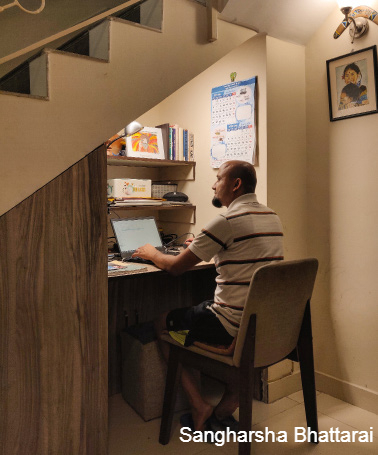
“My wife and I have designated our work hours to ensure they don’t overlap. One parent is always minding the kids,” he says.
Prasanna, who has an eight-year-old son, says parenting is a full-time job. For two people.
“Be reasonable and know your limits in terms of what you can do with a kid in the house,” says Prasanna.
But working from home, with or without kids, doesn’t have to be such a daunting task if you follow a system, according to those who have been operating from the home base before the lockdown made it mandatory.
Sneha Koirala, founder of the lifestyle brand Studio Sarcastic, recommends making notes to keep yourself on track.
“Don’t underestimate the power of a to-do list,” says Sneha who is a sucker for making daily agendas. That is how she stays on top of things.
Ayushma Rana, founder of ST Group which deals in luxury gift packaging and event management, on the other hand, suggests you first calm down and then figure out what works for you. Ayushma, a mother of two, prefers to work in the nighttime when everything is quiet and there aren’t 10 things that need her attention.
“I’m not saying everyone has to become a night-owl but working from home becomes a whole lot easier when you know what works for you,” she says.
Most people vouch for the power of a disciplined lifestyle when it comes to juggling work and home responsibilities while working from home. Those with years of practice know that’s true. Both Sneha and Ayushma agree that the best way to be productive while working from home is to define how, when, and where you are going to work, and stick to the plan.
The strength of a survivor
A little over a year ago, 21-year-old Jenny Khadka’s husband threw acid on her because she ran away from him. She had had enough of his abuses. Jenny suffered 20 percent burns, and spent two months in the hospital where she underwent nine surgeries.
At one point, she confesses, she even thought of ending her life. It would be so easy to jump off the hospital building, she recalls thinking. She couldn’t bear the thought of the additional financial burden her mounting medical expenses would put on her family.
“When I had recovered a bit, I wanted to go home. But I couldn’t. My family didn’t have money to get me discharged,” says Jenny.
Fast forward a year and Jenny is home and has largely come to terms with what has happened. Her case still hasn’t gone to trial and she is awaiting justice. Yet, she claims to be in a better place, at least mentally if not physically.
“The physical scars will never fade. They will always remind me of that horrible evening when life changed forever,” she says.
But Jenny is determined not to let that one incident, however horrifying, dictate the course of her life. Today, she is actively working on burns-related awareness programs through Sagun, an institute for social research and action. She dreams of joining college and maybe being able to speak German one day.
Rumi Rajbhandari, founder of Astitwa Nepal, a non-profit organization that works on acid and burn violence, says Jenny is one of the strongest survivors she has seen to date.
“Most burn survivors take years to accept what has happened to them but Jenny has been quick to move on. She wants to work towards a brighter future,” says Rajbhandari.
And indeed, Jenny says her biggest regret in life would be if she let her past affect her future. So, she tries to lock the bitter memories in a corner of her mind and move on, however difficult that might be at times.
For the full story: https://theannapurnaexpress.com/news/the-unflagging-spirit-of-a-young-acid-attack-survivor-2721
The unflagging spirit of a young acid-attack survivor
When Jenny Khadka was 20 years old, her husband threw acid on her for refusing to go back home with him. He had brought the acid in a vodka bottle and had showed it to Jenny minutes before the incident.
Jenny had married a man 20 years her senior when she was 14. He said he loved her. For her, it wasn’t love, confesses Jenny, but fear of returning home and facing her father’s wrath after fleeing to Okhaldhunga on his motorbike that compelled her to marry this man. She later found out that he was already married and had an eight-year-old son.
“That evening when he dangled the vodka bottle in front of my face and asked me if I knew what it was, I confidently said that a drunkard would obviously carry alcohol with him,” says Jenny.
Suddenly, a cold splash fell on her. Jenny was just about to brush off the wetness when she felt her skin burn like plastic.
Two months in the hospital and nine surgeries later, Jenny, who had suffered 20 percent burn, mostly on her neck, chest and arms, was ready to put it all behind her. Four months after the incident, she, with the help of Astitwa Nepal, an organization that works to rehabilitate victims of violence, had secured a job at Sagun, an institute for social research and action.
“It wasn’t easy but I didn’t want that one incident to change my life. I have many dreams and responsibilities,” she says.
Up until the nationwide lockdown on March 24 to curb the spread of Covid-19, Jenny was actively engaged in conducting awareness campaigns through Sagun, under its Participatory Burn Prevention project. She has traveled to Janakpur and Hetauda and given training to as many as 500 women.
Sociologist Kamal Phuyal, who is the team leader of the said project, says he saw a lot of potential in Jenny when he first interviewed her for the job.
“As a victim of acid attack, she has been able to connect with rural women in a way others’ probably couldn’t have. But that wasn’t the reason we offered her a chance to work with us. It wasn’t because of sympathy either. She was very clear she didn’t want it to be that way,” says Phuyal, adding that he was impressed by the way she conducted herself and tried to rise above her situation.
“Jenny had that zeal to do something,” he says.
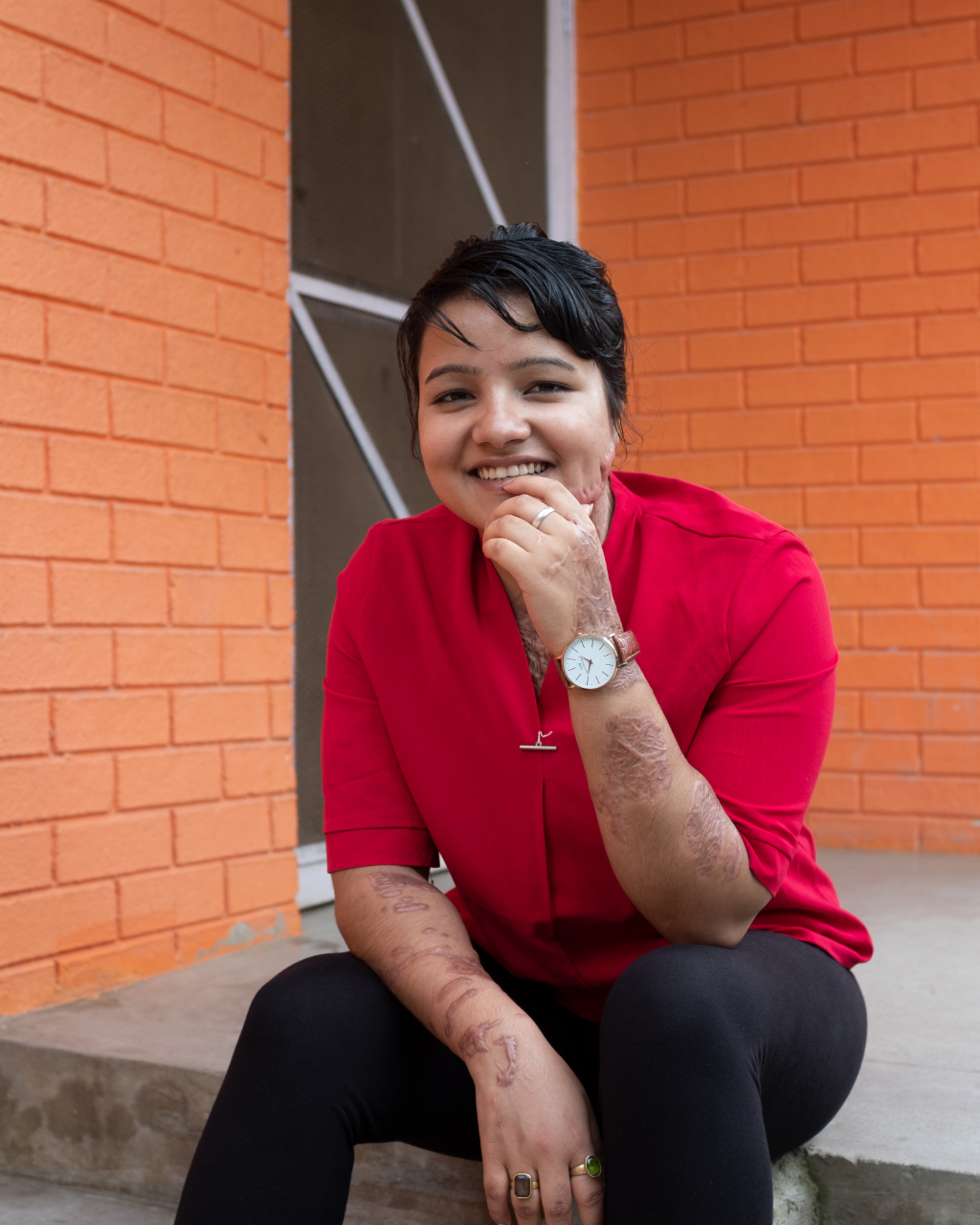
Phuyal took a chance on her and he hasn’t been disappointed. He says wherever she has gone for trainings and awareness campaigns, she has managed to impress people. Now, he has a lot of expectations from her. In the next 10 years, he expects her to have completed her masters. She has only finished her SEE. He believes, in the future, she can do well as a human rights activist.
“When I look at Jenny, I see a bold, courageous young woman who has what it takes to make a difference,” he says.
Rumi Rajbhandari, founder of Astitwa Nepal, calls Jenny one of the strongest acid attack survivors she has met till date. When Rajbhandari first saw her at Kirtipur Hospital, she thought Jenny wouldn’t make it as most of her injuries were on the neck area and there were many complications.
But Jenny pulled through—and how.
College, violin, German
However, there are moments of intense grief. She longs to see her five-year-old son. Sometimes, the scars make her cringe. It’s a stark reminder of the time when she ran screaming for help after the attack and not a single person came forward to help her. They just gawked and muttered.
Yet the sadness and overwhelming emotions, she says, only last a few minutes.
“My family and I have seen some terrible times but we don’t want that to drag us down. We can’t let it because then we will never see better days,” she says.
Just a little over a year after the incident, she has many plans that keep her mind off the unfortunate event. She wants to join college when educational establishments reopen. She will resume violin lessons that she had taken up right before the lockdown.
At home, besides reading and listening to music, she loves to cook and experiment with new dishes, makes paper crafts to decorate her room, and studies a little bit of German.
“I have many interests and hobbies, and they keep me sane,” says Jenny.
As normal as Jenny’s trying to be, her mother, Kamala Khadka, confesses that she is scared for her daughter even today. Constant threats from Jenny’s perpetrator aside, Kamala worries about her daughter’s health and her future.
“People look at you differently and they are a little disgusted by your wounds,” says Kamala.
She adds that she knows her daughter has the strength to power through the tough times ahead of her but that doesn’t console a mother.
Jenny, however, considers herself lucky. Things could have been worse, she says. Her face is unscarred, her right ear is partially damaged but the acid didn’t get to the eardrum so her hearing is intact, and most of her scars can be hidden with a scarf, though she prefers not to.
“Luck has always been on my side,” says Jenny.
She even talks about the time she was making a living selling cosmetics on a cart in Banepa—this was the first time she had run away from her possessive and abusive husband. With her 14-month-old son strapped to her back, she would easily make Rs 4,000 in day, with a profit margin of Rs 2,500.
“Other cosmetic sellers like me wouldn’t do that well,” she recalls with a laugh.
“You see why I consider myself destiny’s child. Things have somehow always worked in my favor,” she says.
This ability to look at the positive side of life has had a cathartic effect on her. The society’s censuring eyes don’t bother her but she hopes no one has to go through what she did. Acid attack condemns you to a life that’s possibly worse than death and she doesn’t wish that on her worst enemy.
So, Jenny wants to be able to work to empower and enable women to not be dependent on the men in their lives, be it their fathers, husbands, or sons. She feels financial independence is key to women leading stronger, better lives.
What’s done is done
According to Jenny, women often normalize abuse at home by laughing it off and hiding bruises under makeup. Women give multiple “second chances” to their violent husbands. The society too doesn’t intervene when they see couples fighting. There’s a popular saying in Nepali, Logne swashni ko jhagada paral ko aago (A husband and wife’s quarrels don’t last long), that governs people’s attitude towards marital discords.
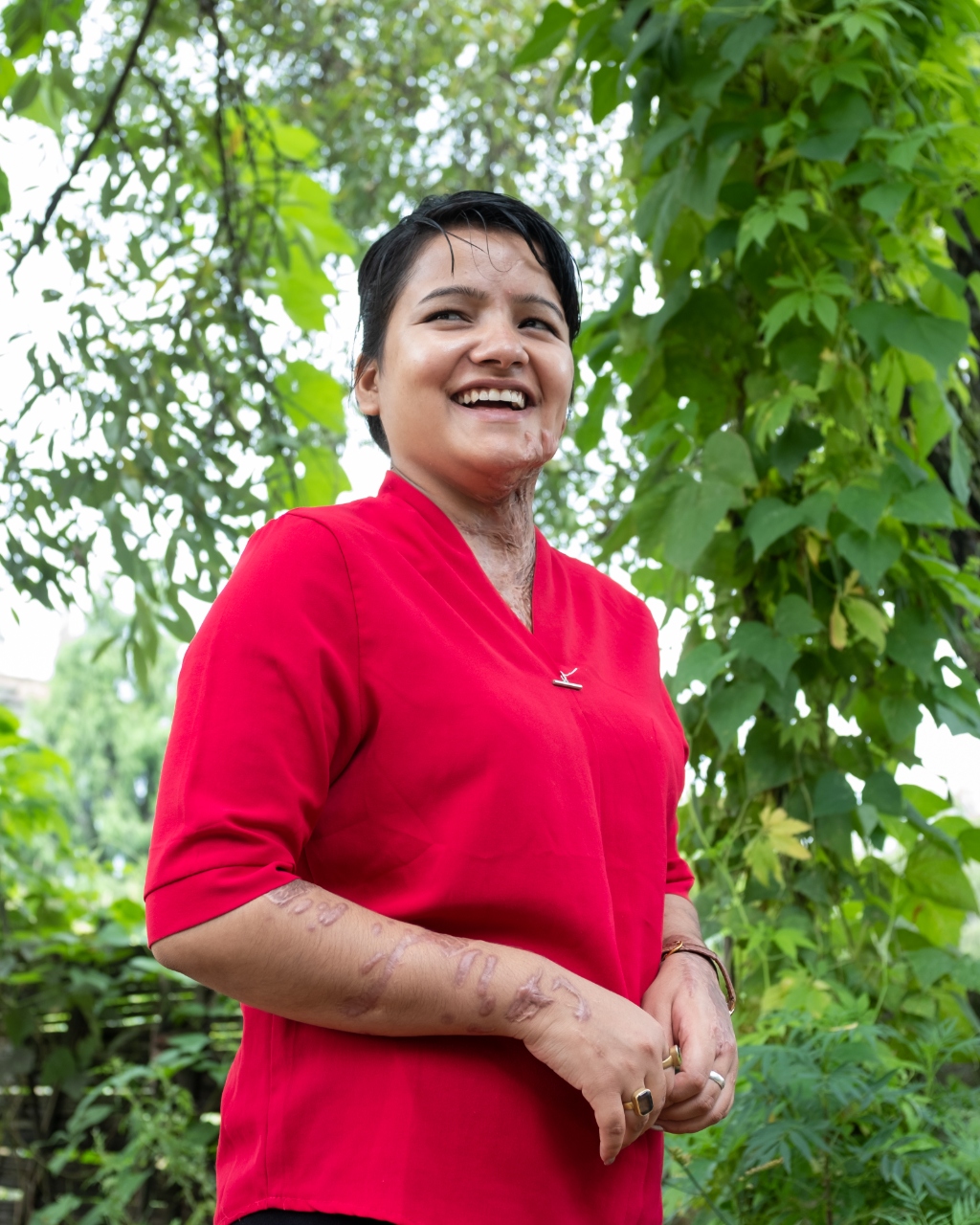
“If someone had spoken up on that night of the incident when he was shouting at me, maybe he wouldn’t have had the guts to do what he did,” says Jenny.
What’s done is done, she quickly adds, not being the kind to live in a world of maybe’s and fantasies. But she has learnt an invaluable lesson, she says, and today she finds herself stepping in and speaking up when she sees a man harass a woman or hears a couple arguing, and urges others to do the same.
“Sometimes a small intervention can avert a disaster,” she says.
Rajbhandari says she is happy to have seen Jenny evolve in the past year, from a timid girl to one who is able to voice her opinion.
“Many acid attack and burn survivors take years to come to terms with what has happened to them but it’s amazing how quickly Jenny has been able to move on,” she says.
Jenny smiles when she is told this and says, “I don’t want to be hung up on my past and spoil my future. That would be a bigger tragedy than what’s already happened.”
Health rituals: More than meet the eye
If there is one lesson Covid-19 has taught us, besides the obvious importance of hygiene, it’s the need to prevent an illness rather than seek its cure. Many of us had been trying to do that in the pre-Covid era too. It’s just that we now do it more fervently than ever before.
Our little health rituals—turmeric latte, apple cider vinegar, variety of herbal teas, to name a few—have thus remained intact even as life otherwise has switched hemispheres. Perhaps, they give us the confidence to strut on the streets, albeit swathed in masks and scarves, unrecognizable to even our closest friends and relatives. Fingers crossed, that regular cup of ginger lemon tea or tulsi infused water will prove to be our guardian angel.
We might have broken up with ibuprofen and revamped our relationship with the peppy, yellow turmeric but have we gotten it right? Are our health rituals actually benefiting us?
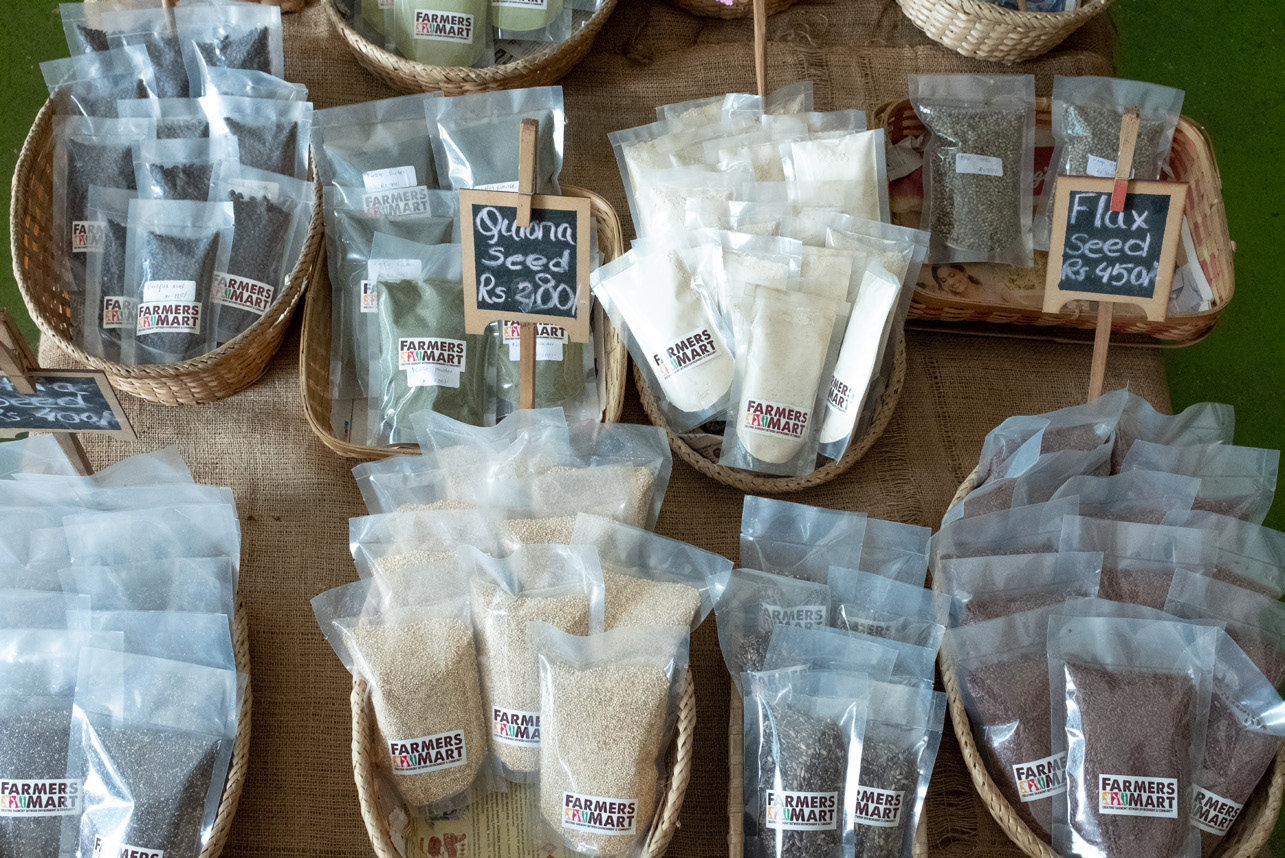
Dibya Karki, program development manager at CECI Nepal, has been having ‘besar paani’ since before Covid-19 made it popular. She finds it helps keep her allergies in check. She brews her magic concoction of ginger, garlic, turmeric, and black pepper every morning, adds a dash of pink salt (because it’s considered a healthier alternative to table salt) and enjoys what’s touted to be an immunity boosting drink.
“I still have to take allergy medications but the instances have reduced,” says Karki, who also has apple cider vinegar in warm water for acidity, but also because she has heard it aids weight loss.
Likewise, Srishti Rana, communication and partnership specialist for Hamro Samman at Winrock International, says drinking home-brewed Kombucha is a ritual that has helped soothe her digestive system, while for Stuti Basnyet, deputy team leader at UKaid Skills for Employment Programme, herbal teas are a staple.
“I follow many wellness gurus and platforms primarily on Instagram and make choices based on what I see and hear, and also based on what’s available locally,” says Basnyet.
Barsha Thakali, CEO of The Event House and model, vouches for the power of white tea—four cups a day—to calm your nerves.
Rituals like these are aplenty, even more so in the wake of the pandemic when upping your immunity is the need of the hour.
Is it for you?
Ankit Agrawal, proprietor of Naturo Earth, a brand that promotes natural and organic living, says it’s incredible that more and more people are “going back to the basics”, i.e. using herbs and plants for healing and wellness. But what needs to be kept in mind is that not everything is for everybody.
Naturo Earth, as a brand, tries to create that awareness through their content on social media and interacting with their customers.
“The idea is to pass on enough information for the customers to make the right choices,” says Agrawal.
At Suiro Teas, producer of handcrafted tea blends, customers are sent an animated video on how to brew the perfect cup of tea. According to Shrisha Pradhanga, founder of Suiro Teas, the concept of using herbs to cure different ailments is nothing new, but everything has to be taken in moderation, keeping the contraindications in mind.
“Our tea blends—both the Beauty Blend and the Clarity Tea—are packaged to be just enough for 30 cups,” says Pradhanga, explaining that herbs have to be taken slowly and their effects will be seen over time. They’re not a quick fix as many would like them to be.
“You shouldn’t have four cups of our teas in a day and expect instant results. Rather, you could have one cup a day for a month and see whether or not it’s helping you,” she adds.
Mona Thapa, co-owner of Farmer’s Mart in Jhamsikhel, Lalitpur, and proprietor of Ferments that produces Kombucha, Kefir, Sauerkraut, and other fermented foods, agrees that everything, no matter how good it is, has to be tested out first.
“Figuring out what works for your body is the key to good health and wellness through natural remedies,” says Thapa. She mentions that your body will respond differently than, say, your friend’s, which is why going by someone else’s experience isn’t ideal.
“If your friend has lost weight because of having apple cider vinegar, it doesn’t mean you will too,” she says.
Try it out for a week
Priyanka Sainju, consultant dietician at B&B Hospital in Gwarko, Lalitpur, and at Vatsalya Natural IVF in Naxal, Kathmandu echoes Thapa’s views. There is no one rule that fits all where diets and supplements are concerned. To get the optimum benefit, many factors like your food habits, allergies, lifestyle, work, and health issues need to be taken into consideration.
“Your body’s response to a certain regime or consumption of certain things will depend on all these things,” she says.
According to Sainju, when you start having something because you think it’s good for you, it’s best to try it out for a week and see how your body reacts to it.
“Even where natural supplements are concerned, there are proper ways to go about it. What you put into your system and when and how you do it matters,” she says.
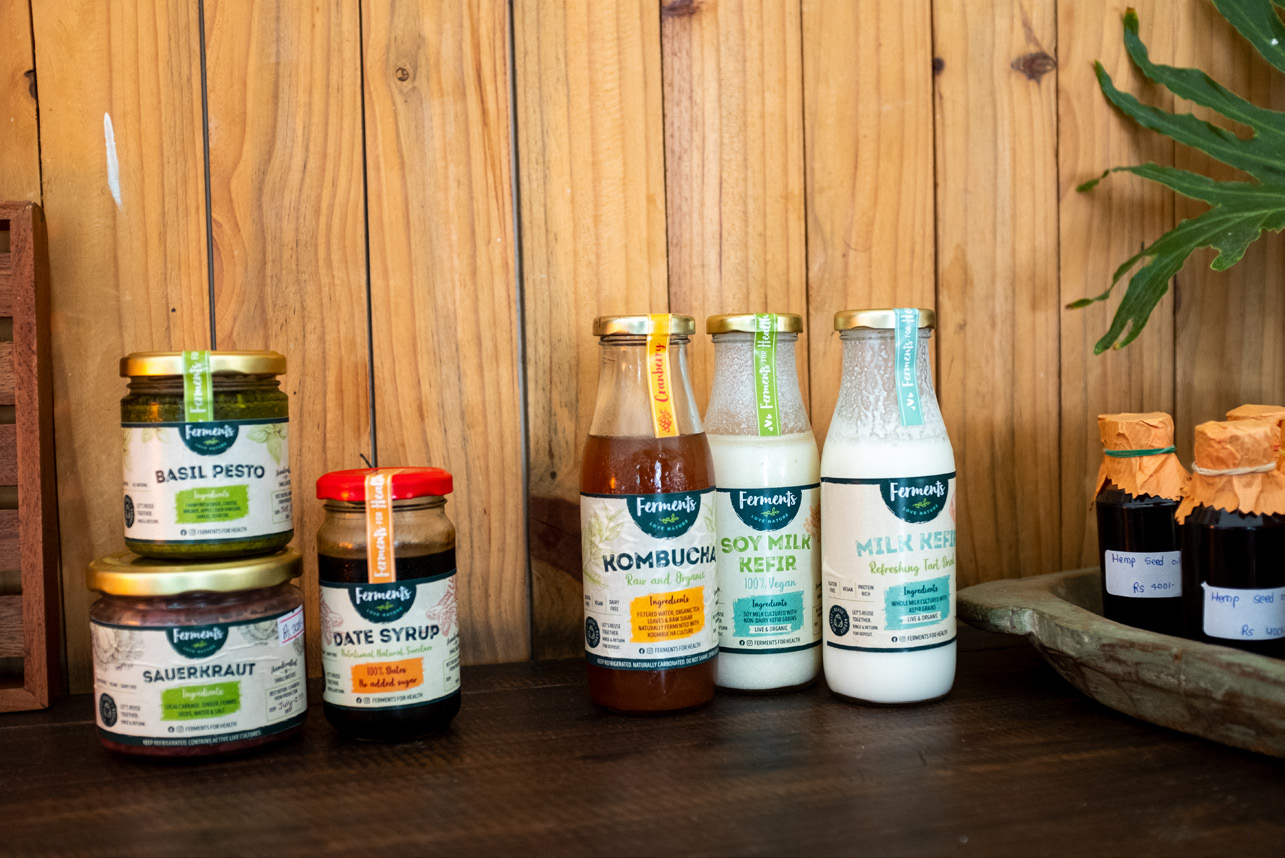
People are largely influenced by YouTube videos, Instagram, and online content, much of which only circle around the benefits of diets and supplements. Social media is people’s go-to source for information on adopting healthier habits.
“It’s good to see people becoming more health conscious and focusing on prevention rather than cure with herbal remedies, but there are correct and incorrect ways to do that,” says Dr Ruby Bajracharya, dietician, ayurvedic doctor, and founder of Lotus Ayurdeva.
“For example, many people have turmeric and black pepper with warm water these days. These warming spices are good for respiratory concerns but if you have piles or bleeding issues like ulcers then, it’s best not to consume them,” explains Dr Bajracharya.
Dr Bajracharya says everything has its pros and cons and the right thing to do would be to consult an expert who can customize a plan for you rather than relying on incomplete, off-the-web information.
“There is only so much research you can do online, no matter how detailed you try to be,” she says, adding that you don’t want to waste your time and energy on something that isn’t effective or, worse, will aggravate existing health issues.
“Natural remedies are definitely loaded with goodness but you have to first figure out whether or not they’re going to be beneficial for you. You shouldn’t base these vital decisions on what you’ve read or heard,” concludes Dr Bajracharya.










